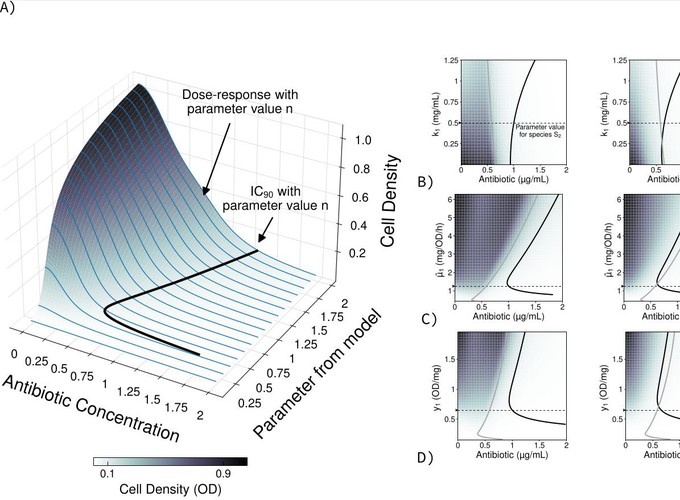 Image credit: Carlos Reding
Image credit: Carlos Reding
 Image credit: Carlos Reding
Image credit: Carlos Reding
Microbes associate in nature forming complex communities, but they are often studied in purified form. Here I show that neighbouring species enforce the re‐distribution of carbon and antimicrobial molecules, predictably changing drug efficacy with respect to standard laboratory assays. A simple mathematical model, validated experimentally using pairwise competition assays, suggests that differences in drug sensitivity between the competing species causes the re-distribution of drug molecules without affecting carbon uptake. The re‐distribution of drug is even when species have similar drug sensitivity, reducing drug efficacy. But when their sensitivities differ the re‐distribution is uneven: The most sensitive species accumulates more drug molecules, increasing efficacy against it. Drug efficacy tests relying on samples with multiple species are considered unreliable and unpredictable, but study demonstrates that efficacy in these cases can be qualitatively predicted. It also suggests that living in communities can be beneficial even when all species compete for a single carbon source, as the relationship between cell density and drug required to inhibit their growth may be more complex than previously thought.